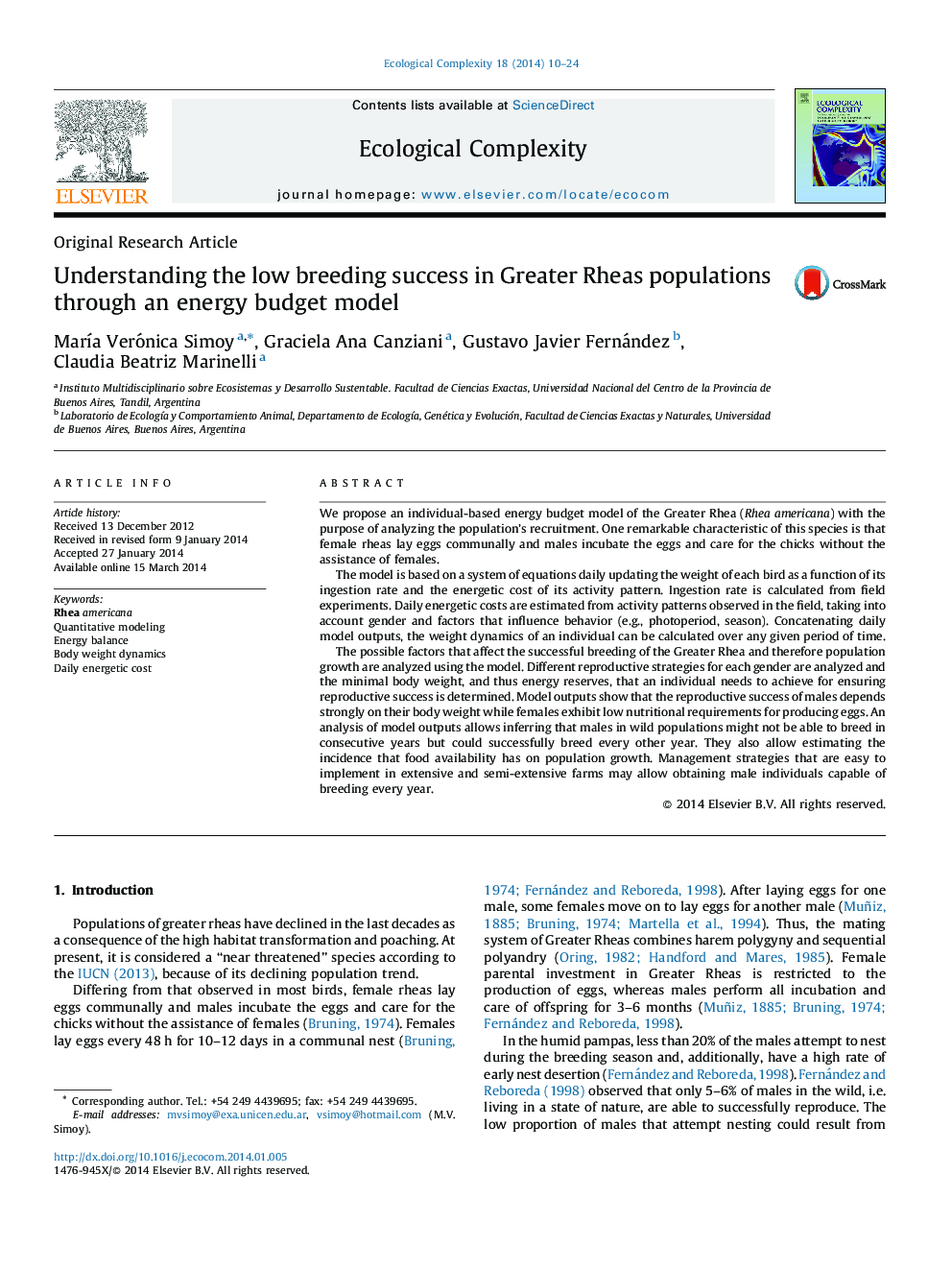| کد مقاله | کد نشریه | سال انتشار | مقاله انگلیسی | نسخه تمام متن |
|---|---|---|---|---|
| 4372452 | 1617096 | 2014 | 15 صفحه PDF | دانلود رایگان |
• Model estimates the weight of Rhea americana at a resolution of 1 day based on an individual perspective.
• Season, photoperiod, behavior, consumption and weight at the beginning of the breeding season are considered in the model.
• Males and females reach a maximum weight after the winter solstice.
• Maximum and minimum weights attained depend of the consumption rates interval width.
• We observed that the reproductive success of males depends strongly on their body weight (energy reserves).
We propose an individual-based energy budget model of the Greater Rhea (Rhea americana) with the purpose of analyzing the population's recruitment. One remarkable characteristic of this species is that female rheas lay eggs communally and males incubate the eggs and care for the chicks without the assistance of females.The model is based on a system of equations daily updating the weight of each bird as a function of its ingestion rate and the energetic cost of its activity pattern. Ingestion rate is calculated from field experiments. Daily energetic costs are estimated from activity patterns observed in the field, taking into account gender and factors that influence behavior (e.g., photoperiod, season). Concatenating daily model outputs, the weight dynamics of an individual can be calculated over any given period of time.The possible factors that affect the successful breeding of the Greater Rhea and therefore population growth are analyzed using the model. Different reproductive strategies for each gender are analyzed and the minimal body weight, and thus energy reserves, that an individual needs to achieve for ensuring reproductive success is determined. Model outputs show that the reproductive success of males depends strongly on their body weight while females exhibit low nutritional requirements for producing eggs. An analysis of model outputs allows inferring that males in wild populations might not be able to breed in consecutive years but could successfully breed every other year. They also allow estimating the incidence that food availability has on population growth. Management strategies that are easy to implement in extensive and semi-extensive farms may allow obtaining male individuals capable of breeding every year.
Journal: Ecological Complexity - Volume 18, June 2014, Pages 10–24
